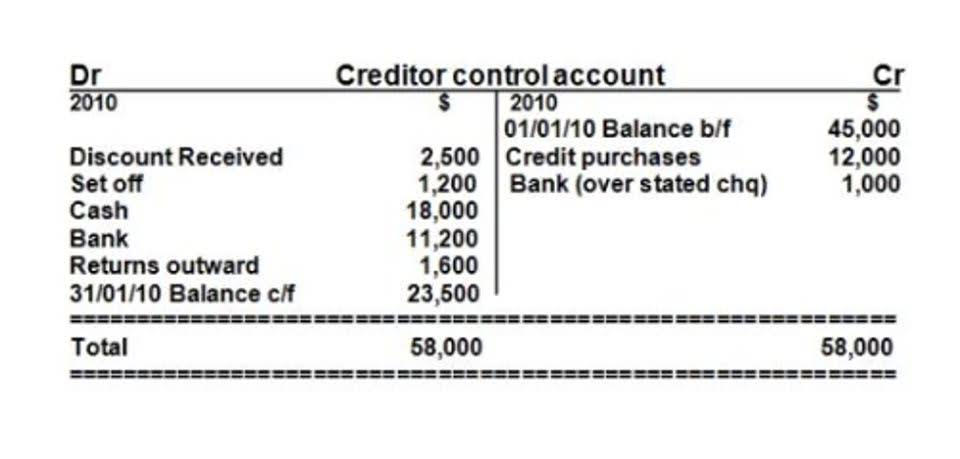Blog
12 3 Accounting For Investments By Means Of The Equity Method
- June 25, 2020
- Posted by: chatana
- Category: Bookkeeping
Content

Significant influence is presumed at ownership levels of at least 20%, but is determined based on the facts for each investment. For example, significant influence may be present for ownership levels of less than 20% if the investor licenses technology that is important to the investee company. Alternatively, lack of significant influence may be present for ownership levels above 20% if prohibited by contracts. A firm that owns less than 20%, but still exerts a lot of control, would need to use the equity method. The consolidated method includes all revenue and liabilities, but goes into effect only when a company has a majority interest in the investment. However, the hedging relationship might result in ineffectiveness that would be recognised in profit or loss during the term of the hedging relationship. Be estimated by applying the change in a general price index to the weighted average for the period of the difference between monetary assets and monetary liabilities.
As per tax laws, the investing company is required to deduct tax on dividend income as well. Difference between equity and cost methods S.No Equity Method Cost Method 1 This method is used when the investor has an influence or a major control over the investee’s stake. This method is used when an investor makes passive long-term investment in the company. Increase or decrease in fair value of the investment is adjusted in the investment. Parent must use the equity method to account for its investment in Son because it has the ability to exert significant influence over Son. The partial equity method is an accounting methodology that companies investing in another entity use to account for their investment when their stake is not considered significant. However, that seat does not enable the investing company to exert much influence over the way the investee plans and runs its business.
Companies incorporate different accounting methods to help accurately track profits and losses. Many companies that invest in other businesses or organizations use the equity method of accounting to track the financial performance of their investments. Understanding what the equity method of accounting is and how it works can help you determine if this is the right accounting method for your organization. In this article, we discuss what the equity method of accounting is, how it works and review two examples of how equity accounting helps track financial performance.
What Is The Equity Method?
Eventual payment of a dividend shrinks the size of the investee company. Thus, the investor decreases the investment account when a dividend is received if the equity method is applied. GAAP, unless signs of significant influence are present, an investor owning less than 20 percent of the outstanding shares of another company reports the investment as either a trading security or available-for-sale security. In contrast, an investor holding 20 percent or more but less than or equal to 50 percent of the shares of another company is assumed to possess the ability to exert significant influence. Unless evidence is present that significant influence does not exist, the equity method is applied by the investor to report all investments in this 20–50 percent range of ownership. A common example of such an arrangement is several companies forming a joint venture to research and develop a specific product or treatment.
Subsequent contributions or capital calls increase the carrying value of the investment. The investing company has a similar investment proportion to other investors. That’s a separate and more complicated topic, so we’re going to focus on just the equity method here. Another group of shareholders has majority ownership, and operate it without regard to the investor’s views. The investee’s opposition to the investor’s influence, as evidenced by lawsuits or complaints to regulatory authorities.
What Is Equity Method Of Accounting? Definition And Examples
During year 20X1, Entity B sold this inventory to its client for $1.5 million. Prepare the journal entry to record the sale of an equity method security. Compute the amount of income to be recognized under the equity method and make the journal entry for its recording.

Fill out the form below and we’ll reach out to talk more about how we can help your business. Defined as an investment of between 20% and 50%, with representation on the board of directors, or both.
Examples Of Consolidation In Advanced Accounting
Interestingly, substantial or even majority ownership of an investee by another party does not necessarily prohibit the investor from also having significant influence with the investee. For instance, many sizable institutional investors may enjoy more implicit control than their absolute ownership level would ordinarily allow.

As only assets and equity are affected, without any recognition of the investee’s debt, the investor’s debt-to-equity and debt-to-total capital ratios improve under the equity method. In most cases, Macy’s would include a single-entry line on its income statement reporting its share of Saks’ earnings. For example, if Saks earned $100 million, and Macy’s owned 30%, it would include a line on the income statement for $30 million in income (30% of $100 million).
How To Report Equity Investments On A Balance Sheet
Deferred tax may not be reclassified as a current asset/liability if an entity adopts the current/non-current approach. A firm commitment to acquire a business in a business combination cannot be a hedged item, except for foreign exchange risk because other risks being hedged cannot be specifically identified and measured. If a general price index is not available then an estimate should be based on movements in the exchange rate between the functional and a relatively stable foreign currency. GAAP , which incorporates the accounting standards issued by the United Kingdom Accounting Standards Board and which, with some exemptions, applies to all registered companies.
- The equity method works by determining the controlling interest percentage a company has in another company or entity.
- Desert Eastridge Holdings calculates the loss from this investment by multiplying their controlling interest (35%) by the company’s loss ($475,000), which equals $166,250.
- The guidance recognizes judgement will be necessary for each individual set of circumstances.
- Even with an ownership stake of 20 percent or higher, a minority investor can present factors disproving the influence needed to use the equity method.
- To identify basis differences, the investor must perform a hypothetical purchase price allocation on the investee as of the date of the investor’s investment.
- GAAP, unless signs of significant influence are present, an investor owning less than 20 percent of the outstanding shares of another company reports the investment as either a trading security or available-for-sale security.
However, the Financial Accounting Standards Board interprets this rule flexibly. Interpretation No. 35 states that companies can overcome the presumption of substantial influence based upon the particular facts of the case. Thus, a company might be able to refute the claim of influence even if it owns 20 percent to 50 percent of investee shares. Conversely, an investor might prove substantial influence with less than 20 percent ownership. After initial measurement, the investee must recognize their share of net income/losses within current earnings with a corresponding adjustment to the recorded equity investment.
A Roadmap To Accounting For Equity Method Investments And Joint Ventures
The investor’s proportionate share of the investee’s AOCI is written off against the remaining carrying value, also contributing to the calculation of the carrying amount of the “new” asset. If the investor’s amount of adjustment to AOCI exceeds the equity investment value, the excess will be recorded to the income statement as a current period gain. In instances where the investor owns less than 20% of an entity and is unable to demonstrate influence over the entity, the investor will apply the cost method of accounting https://www.bookstime.com/ to the investment. The cost method specifies recording the investment at the purchase price or historical cost and recording any activity in the income statement. Cost method investments are not adjusted for the earnings or losses of the investee, but may be analyzed for impairment. The equity method works by determining the controlling interest percentage a company has in another company or entity. Company’s record these percentages and figures on their balance sheet and income statement to help show their investments.
- The equity method ensures proper reporting on the business situations for the investor and the investee, given the substantive economic relationship they have.
- The goal is for the carrying value to reflect the investor’s equity interest in the investee.
- Income must be recognized either when earned by the investee or when later distributed to the investor, but not at both times.
- If the company owns 20% or less of the other company, it will use the cost method, which reports dividend income and the asset value of the investment.
- This percentage helps them determine profits and losses that relate to their investment.
- •Company analysis is a part of, but not equivalent to, security analysis.
Accounting for equity method investments can be quite complicated, but this article summarizes the basic accounting treatment to give you a high level understanding. This lesson introduced the equity method of accounting, a method of accounting used for equity investments of between 20 and 50 percent total interest in the investee company. At this level of ownership, an investor is deemed to be able to exercise significant influence over the investee, justifying the more robust accounting. Under the equity method, investments are recorded at cost, then increased for the investor’s share of the investee’s net income , and reduced by any dividends. The goal is for the carrying value to reflect the investor’s equity interest in the investee. The accounting principles related to equity method investments and joint ventures have been in place for many years, but they can be difficult to apply. For these reasons, accounting for equity method investments and joint ventures can be a particularly challenging aspect of U.S.
Equity Method
Hearst Newspapers participates in various affiliate marketing programs, which means we may get paid commissions on editorially chosen products purchased through our links to retailer sites. This material has been prepared for general informational purposes only and is not intended to be relied upon as accounting, tax, or other professional advice.
In this scenario, the partners will account for their investment in the joint venture as an equity method investment. Equity accounting is an accounting method that records a company’s investments in other businesses or organizations. Some companies have partial ownership of other companies if they acquire 20% to 50% of a company’s stock, so it’s important to track these investments. This method also records the company’s profits or losses due to an investment with another company.
Accounting Measures
The answer depends on the amount of the company’s voting stock that Macy’s would own. Third, we could use the free cash flow to the firm rather than free cash flow to equity. In the FCF model, the weighted average cost of capital is used to discount the predicted FCF, equal to net income minus change in net working capital and capital expenditure, plus non-cash expenses and after-tax interest expense. In the FCF model, equity value equals the discounted value of the FCF minus the market value of the firm’s outstanding debt. The FCF and FCFE procedures will give the same intrinsic value, and we feel the FCFE method is a more direct method for stock valuation purposes.
Intercorporate Investments
The consolidated method only goes into effect when a firm has a controlling stake in the other firm. With this method, as the majority owner, Macy’s must include all of the revenues, expenses, tax liabilities, and profits of Saks on the income statement. It would then also include an entry that deducted the portion of the business it didn’t own. Therefore, if Macy’s bought 10 million shares of Saks stock at $5 per share for a total cost of $50 million, it would record any earnings it received from Saks on its income statement.
Ias Plus Newsletter
Thus, profits for the year are derived in the income statement and form an entry into the balance sheet to increase the profits retained in past years. If paid by cash, they will affect the firm’s cash flow statement and via this will change the cash balance shown in the balance sheet at the end of the year. If financed by credit and unpaid at the end of the year, this will be reflected in the amount of creditors shown in the balance sheet and any interest cost for the credit would be reflected in the income statement. This interrelationship between accounting items also indicates that the treatment of a given item must be consistent between statements. Under U.S. generally accepted accounting principles, an investor with a 20 percent to 50 percent stake in the voting stock of a company has substantial influence on the investee and uses the equity method of accounting.

